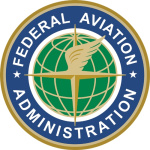- Industry: Government
- Number of terms: 35337
- Number of blossaries: 0
- Company Profile:
The direction in which the nose of the aircraft is pointing during flight.
Industry:Aviation
A marker on the heading indicator that can be rotated to a specific heading for reference purposes, or to command an autopilot to fly that heading.
Industry:Aviation
An instrument which senses airplane movement and displays heading based on a 360º azimuth, with the final zero omitted. The heading indicator, also called a directional gyro, is fundamentally a mechanical instrument designed to facilitate the use of the magnetic compass. The heading indicator is not affected by the forces that make the magnetic compass difficult to interpret.
Industry:Aviation
The component of atmospheric winds that acts opposite to the aircraft’s flightpath.
Industry:Aviation
The term, originated by inventor James Watt, means the amount of work a horse could do in one second. One horsepower equals 550 foot-pounds per second, or 33,000 foot-pounds per minute.
Industry:Aviation
In gas turbine engines, a start which occurs with normal engine rotation, but exhaust temperature exceeds prescribed limits. This is usually caused by an excessively rich mixture in the combustor. The fuel to the engine must be terminated immediately to prevent engine damage.
Industry:Aviation
In gas turbine engines, a condition of normal light off but with r.p.m. remaining at some low value rather than increasing to the normal idle r.p.m. This is often the result of insufficient power to the engine from the starter. In the event of a hung start, the engine should be shut down.
Industry:Aviation
The branch of science that deals with the transmission of power by incompressible fluids under pressure.
Industry:Aviation
